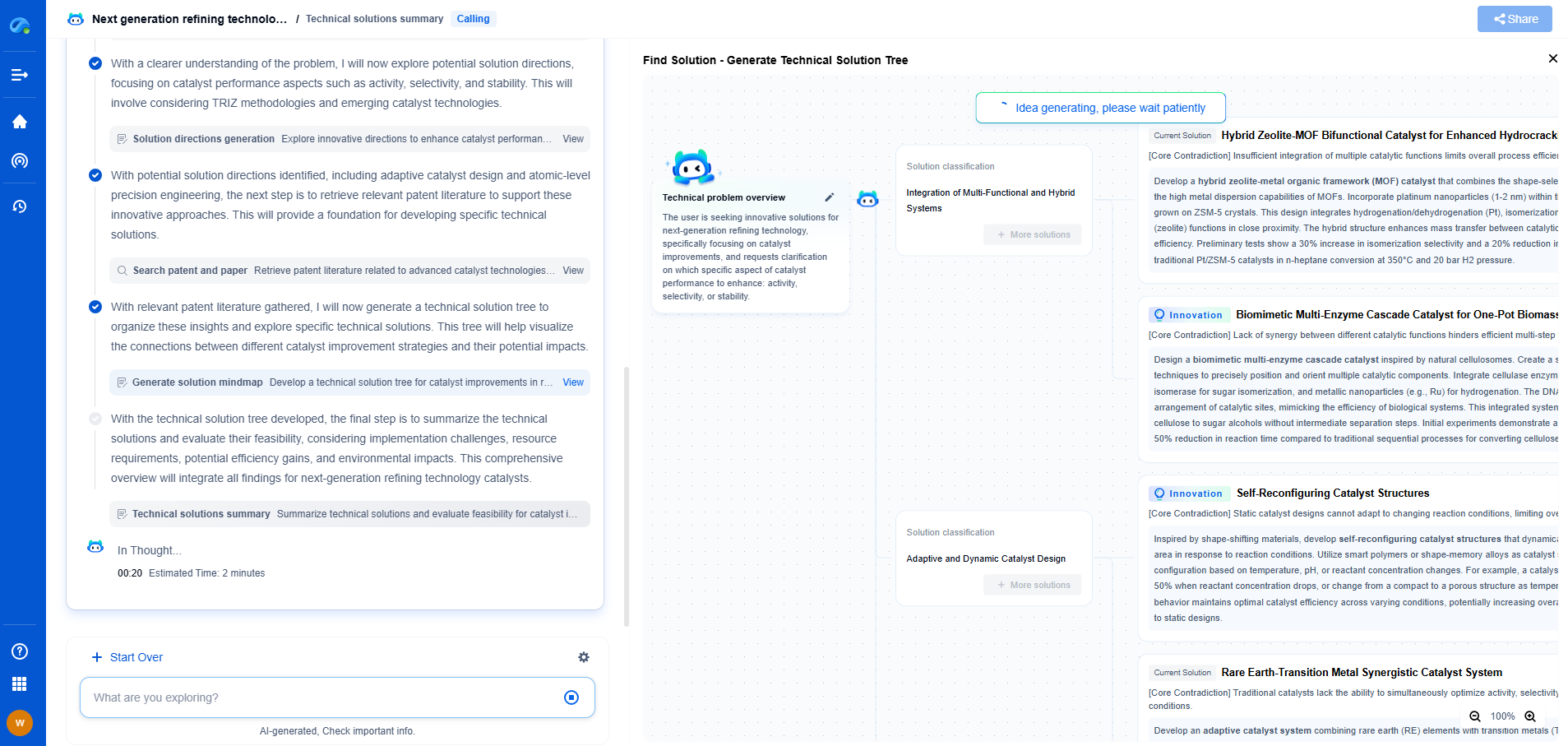Recursive RMS Calculation: Efficient Implementation for Real-Time Systems
JUL 17, 2025 |
When it comes to real-time systems, efficient computation is paramount. One such calculation that often arises in these systems is the Root Mean Square (RMS), a statistical measure used in various engineering contexts, such as signal processing and control systems. Unlike traditional batch processing, real-time systems require on-the-fly calculations to maintain system responsiveness. This is where recursive methods come into play, offering a streamlined approach to RMS calculation. In this article, we will explore how recursive RMS calculation can be efficiently implemented in real-time systems.
Understanding RMS and Its Importance
The RMS value is a measure of the magnitude of a varying quantity and is particularly useful for analyzing signals. It is defined as the square root of the mean of the squares of the values. In practical terms, it provides insight into the energy content of a signal, making it crucial for applications ranging from audio signal processing to electrical engineering.
In real-time systems, the ability to quickly calculate the RMS value is essential. Whether it's monitoring power levels in an electrical grid or analyzing sound waves in audio equipment, the speed and accuracy of RMS computation can significantly impact system performance.
Challenges in Real-Time RMS Calculation
Traditional methods of RMS calculation involve taking a set of data points, squaring each one, averaging the squares, and then taking the square root. While this method is accurate, it requires storing and processing all data points, which can be computationally expensive and memory-intensive. In real-time systems, where new data is constantly arriving, this approach becomes impractical.
Recursive RMS calculation addresses these challenges by allowing for continuous updates to the RMS value without the need to store all previous data points. This technique reduces the computational load and memory usage, making it ideal for real-time applications.
The Recursive Approach
The recursive method of calculating RMS involves updating the RMS value as new data points arrive. Here's a step-by-step breakdown of how this can be achieved:
1. Initialize: Start by initializing variables for the sum of squares and the count of points.
2. Update: For each new data point, update the sum of squares by adding the square of the new point. Increment the count of points.
3. Calculate RMS: The RMS can then be computed as the square root of the sum of squares divided by the count of points.
4. Repeat: As new data points arrive, repeat the update and calculation steps.
This approach ensures that you always have an up-to-date RMS value without needing to recalculate from scratch with each new data point.
Advantages of Recursive RMS Calculation
Implementing a recursive RMS calculation in real-time systems offers several advantages:
- **Efficiency**: By updating the RMS value incrementally, the recursive approach minimizes the computational burden.
- **Reduced Memory Usage**: There is no need to store all previous data points, which saves valuable memory resources.
- **Scalability**: The recursive method can handle large data streams efficiently, making it suitable for systems with high data throughput.
- **Real-Time Responsiveness**: By maintaining an up-to-date RMS value at all times, the system can quickly respond to changes in the data stream.
Practical Implementation Considerations
When implementing recursive RMS calculation in real-time systems, several practical considerations should be kept in mind:
- **Precision and Overflow**: Careful attention must be paid to numerical precision and potential overflow issues, especially in systems with limited numerical precision.
- **Initialization and Reset**: Proper initialization is crucial, and there should be mechanisms to reset calculations if needed, such as when starting a new measurement cycle.
- **Algorithm Optimization**: Optimizing the algorithm to fit the specific constraints and requirements of the system can further enhance performance.
Conclusion
Recursive RMS calculation provides a powerful tool for efficiently managing real-time data streams in a variety of applications. By leveraging this approach, engineers can ensure that their systems remain responsive and resource-efficient. As real-time systems continue to evolve, the need for such efficient computational techniques becomes increasingly critical, paving the way for advancements in fields ranging from telecommunications to industrial automation. With careful implementation and consideration of system constraints, recursive RMS calculation can significantly enhance the performance and capabilities of real-time systems.
Whether you’re developing multifunctional DAQ platforms, programmable calibration benches, or integrated sensor measurement suites, the ability to track emerging patents, understand competitor strategies, and uncover untapped technology spaces is critical.
Patsnap Eureka, our intelligent AI assistant built for R&D professionals in high-tech sectors, empowers you with real-time expert-level analysis, technology roadmap exploration, and strategic mapping of core patents—all within a seamless, user-friendly interface.
🧪 Let Eureka be your digital research assistant—streamlining your technical search across disciplines and giving you the clarity to lead confidently. Experience it today.
- R&D
- Intellectual Property
- Life Sciences
- Materials
- Tech Scout
- Unparalleled Data Quality
- Higher Quality Content
- 60% Fewer Hallucinations
Browse by: Latest US Patents, China's latest patents, Technical Efficacy Thesaurus, Application Domain, Technology Topic, Popular Technical Reports.
© 2025 PatSnap. All rights reserved.Legal|Privacy policy|Modern Slavery Act Transparency Statement|Sitemap|About US| Contact US: help@patsnap.com

